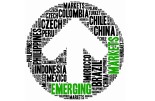MUFG: Emerging markets outlook into year-end
MUFG: Emerging markets outlook into year-end

With the final weeks of 2023 coming into view, a global environment stained by an unfavourable growth-inflation mix, high rates, low liquidity and a strong US dollar poses marked challenges to the EM outlook.
With some EM central banks already easing rates aggressively despite sticky inflationary pressures, it is hard to be constructive on EMs on a homogenous basis – both across geographies and across asset classes.
We remain selective on EM and favour the GCC region, India, Indonesia and Mexico, whilst from an EM asset-allocation perspective, hard currency or external debt looks more attractive to us versus local currency debt, equities or FX.
Israel crisis – first thoughts
Our thoughts are with those affected by the recent attacks in Israel. The Bank of Israel (BoI) announced earlier today that it stands ready to provide up to USD30bn of FX liquidity in the spot market and up to USD15bn in swaps against the backdrop of depreciation pressures on the Israeli Shekel (ILS). The ILS had depreciated by ~2% versus the US dollar (USD in the initial trading hours, but since stabilised. We highlighted our current thinking of the state of affairs through economic and rates channels:
- Economics. Israel’s underlying balance of payments position is much healthier today than it was during past major episodes of escalating tensions and conflict, with a large current account surplus, a reduced reliance on foreign capital inflows, and an unusually large stock of foreign currency reserves (~USD200bn, ~40% of GDP). This strong balance of payments position has reduced Israel’s economic and financial vulnerability to shocks and will ease the task of the Bank of Israel in addressing any financial stability implications from the conflict.
- Rates. We are perceiving the conflict as predominantly a stagflationary shock, wherein the supply-side will likely face disruptions, fiscal expenditure will most likely increase and calling-up reservists might increase labour market tightness further. This could probably reinforce the outlook for a steeper back-end of the ILGOV and ILS rates curve, as well as wider asset swap spreads. If the negative market reaction persists or intensifies, we would not rule further response by the BoI either via policy rates and/or additional FX interventions.
FX views
EM FX continues to underperform even as USD weakens modestly against other major currencies. Rising US yields are proving more disruptive for financial market. Popular FX carry trades are reversing. Main impact so far from Hamas-Israel conflict has been higher price of oil, posing downside risk for EM FX.
Trading views
Market reaction over Israel seems subdued so far. Friday’s price action looked significant. US rate volatility is starting to be supportive for EM. The other big factor for EMFX remains China FX policy but first day after the long holidays saw no change in sentiment. As the number of authorities defending their currencies is rising, our stance remains long the currency but paid the curves as CBs try to increase the spot fixing gap in may pairs.
Week in review
National Bank of Poland raised key interest rates by 25bp while Romania held interest rates. Turkey’s September inflation rose 61.5%y/y, slightly lower than market expectations. Meanwhile, Moody’s lowered Egypt’s sovereign debt rating by one notch to 'Caa1'.
Week ahead
This week is a busy one in EM EMEA. Poland will have its general election on 15 October. There are also inflation releases in Ukraine, Egypt, Hungary, the Czech Republic, Russia, Romania and Israel. What’s more, Q2 2023 current account data will be released in Russia and Turkey.
Forecasts at a glance
In a world of tightening global financial conditions and questions about the liquidity implications of the now-finalised US debt ceiling, we see a degree of macro risks for EM economies in H2 2023, with external funding requirements the central concern. We expect EM growth to trough this year but remain below potential in the 2024 recovery. The silver lining is that subdued growth should cap inflation, facilitating monetary policy easing where external balances allow.
Core indicators
According to IIF data, the outflows streak from EM bond funds continued for the tenth successive week (EM fund outflows totalled USD1.3bn in the week ending 6 October), as investors continued to reduce exposure to EM fixed income assets amidst higher real rates.









